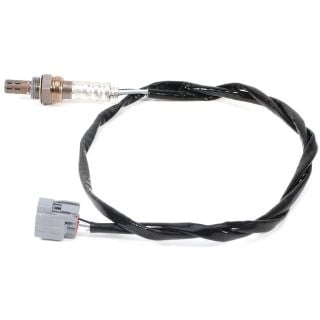No car owner wants to see the inspection engine start. This warning sign is meant to tell you that your car needs maintenance or repairs. Usually, when the check engine light is on, it means your vehicle's exhaust system is not working properly. A key reason for the indicator light to turn on is the failure of the oxygen sensor. Learn more about this equipment to understand its importance and when to repair it.
What Is the Oxygen Sensor and What Does It Do?
The oxygen sensor is part of the vehicle emission system. It measures the proportion of oxygen in the engine. The internal combustion of the vehicle is carried out by burning gasoline. In order to properly burn gasoline, most cars require a ratio of 14 grams of oxygen per gram of gasoline. The oxygen sensor helps the vehicle maintain this balance. Improve your vehicle's fuel efficiency
The sensor is usually located on the passenger side of the car and is installed directly on the exhaust pipe near the catalytic converter. When the sensor fails, your car may lose up to 40% of its fuel efficiency because your car will use too much gasoline.
When the car has too much air, it will say that the engine is lean. When the engine does not get enough air, it is said to be running. Lean engine causes jitter or hesitation during acceleration. The rich engine mixture can cause the vehicle to heat up and cause pollution. Both of these conditions may cause engine damage and insufficient fuel mileage. The O2 sensor can control your emissions.
Your vehicle may have more than one sensor or even multiple sensors, depending on the engine type, make, and model.

Signs Your Car Oxygen Sensor Is Faulty
You can tell your oxygen sensor is faulty by the following signs:
1. Failure to pass the emissions test
2. A decrease in fuel mileage
3. Check engine light going on
4. Poor performance, rough idling, stalling, etc.
5. Code checker identifying O2 sensor failure
Our mechanics have the specialized equipment to test the oxygen sensor in your vehicle. Using the check engine light codes, we can quickly identify why your light is on and suggest solutions.
Guidelines for Replacing the Oxygen Sensor
How often you need to replace the oxygen sensor replacement depends on the age of your vehicle and the type of sensor you have. Newer vehicles less than 20 years old may require sensor replacement every 100,000 miles. Vehicles before the mid-1990s need to be replaced between 50,000 to 70,000 miles. Check the manufacturer's recommended service for the best guide to maintain the fuel efficiency of your vehicle and ensure the normal operation of the vehicle.
The oxygen sensor is fairly easy to diagnose and replace. Generally, you cannot repair a faulty O2 sensor. Due to the technology and material of its casing, it must be replaced. There are some DIY places that will tell you how to clean the sensor to keep it a few miles away, but you are just postponing the inevitable. There is no guarantee that cleaning the sensor will solve the problem. You may also damage sensitive technology.
Once you know that you have a bad sensor, it's like replacing a spark plug. Some people do choose to replace the sensor themselves, but you do need a special socket to do so. It is important not to get any oil or grease on the sensor to ensure the normal operation of the sensor. The mechanic can handle this work and ensure that it is installed correctly to make your car reach the best operating condition.

Don’t Ignore the Check Engine Light
Check the engine lights to tell you that your car has a fever. sick. This may be a trivial matter, such as a loose air cap. This may also mean that the catalytic converter is malfunctioning or the wires are damaged. In some cars, changes in humidity can cause the check engine light to turn on. Without the correct diagnosis, you cannot be sure where the problem is. Knowing why the check engine light is on can give you peace of mind, especially after making necessary repairs.
ECCPP has a number of business outlets in the United States, which can provide the spare parts and services you need for various brands and models of cars. Find the matching parts for your car on our website, make purchases, and let us help you maintain the best performance of your car.













